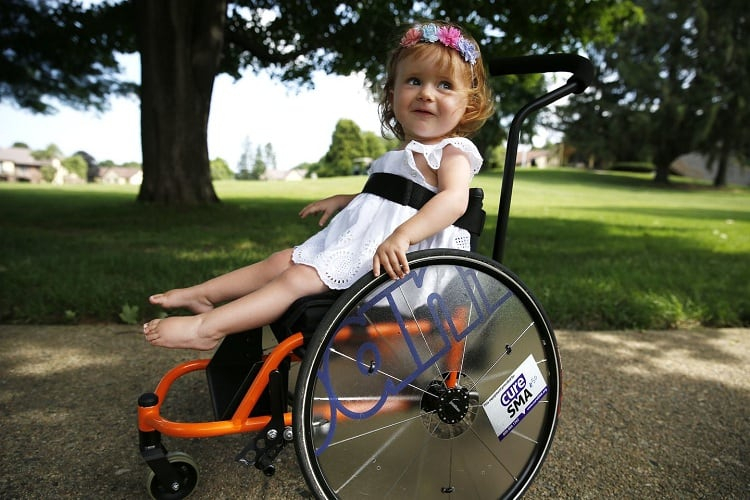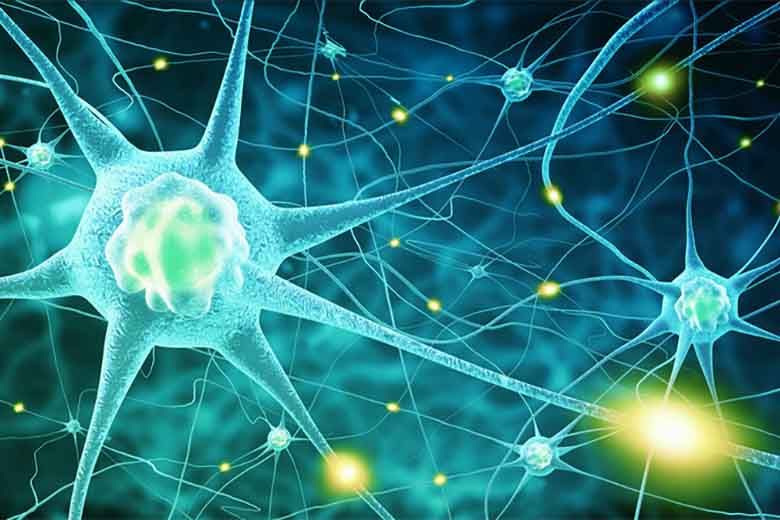
OVERVIEW OF SPINAL MUSCULAR ATROPHY
WHAT IS SPINAL MUSCULAR ATROPHY
Spinal muscular atrophy (SMA) is a group of inherited diseases that gradually destroy motor neurons — nerve cells in the brain stem and spinal cord that control essential skeletal muscle activity such as speaking, walking, and breathing. and swallowing, leading to weakness and atrophy. The disease is caused by mutations in the autosomal recessive gene (number 5).

SYMPTOM
Patients with spinal muscular atrophy have symptoms that include:
- Difficulty in movement
- Muscle weakness from near to far
- Decreased muscle tone
- Loss or decreased reflexes
- Local tongue vibration

CLASSIFY
Spinal muscular atrophy is divided into 5 types based on the age of onset and severity of the disease
| Type 0 | Type I (Werdnig-Hoffmann) | Type II (Dubowitz) | Type III (Kugelberg-Welander) | Type IV |
| This is the rarest but most serious condition that occurs in the unborn baby. Babies after birth may have some problems such as joint deformities, weak muscle tone, heart defects. In addition, children's respiratory muscles are very weak and they often do not live past childhood due to respiratory failure, with an average life span of less than 6 months. | This is the most common type in the group. Signs of muscle weakness are evident at birth or in the first few months of life. Most affected children cannot control their head movements or cannot sit, have problems swallowing, which can lead to difficulty eating and poor growth, respiratory muscle weakness, an abnormal bell-shaped chest that prevents the lungs from fully expanding. safety, weak or absent tendon reflexes, severe generalized hypotonia, the child may die from respiratory failure and complications of muscle paralysis. The average life expectancy of children with type 1 muscular atrophy is usually no more than 2 years. | This type occurs in babies between 6 and 18 months of age. Children can sit on their own but cannot stand, walk alone, often have tremors in the fingers, scoliosis, difficulty swallowing, respiratory muscle weakness and motor development delay. Life expectancy of people with this type of muscular atrophy varies from subject to subject, the average life expectancy of people with this type of disease is about 25 years. | People with this syndrome can stand or walk alone. However, over time, walking and climbing stairs can become difficult. Some patients have muscle spasms, scoliosis and need wheelchair support for life. The life expectancy of people with this syndrome is usually the same as that of the average person. | This is a rare condition and usually begins in adulthood. Affected individuals typically have mild to moderate muscle weakness, tremors, and mild shortness of breath. People with type 4 spinal muscular atrophy have the same life expectancy as the average person. |
DIAGNOSTIC METHODS
Spinal muscular atrophy is diagnosed based on:
- Clinical signs and symptoms
- CPK (creatinkinase) muscle test, muscle biopsy, potential EMG
- Testing for SMN1 gene mutations, identifying deletion mutations in exon 7 and exon 8
OBJECT
This disease is caused by an autosomal recessive mutation with a carrier rate of up to 1/50, so everyone of reproductive age should be screened for this disease, especially:
- People with family members with muscular dystrophy
- Pre-marital screening
- Prenatal screening
- People with clinical signs of suspected disease

TREATMENT AND PREVENTION MEASURES
Currently, there is no cure for spinal muscular atrophy, the main method used is to treat symptoms, prevent complications and support life function for patients.
The most effective method of disease prevention is genetic counseling, screening test for SMN gene mutation for premarital couples or prenatal diagnostic test for SMN gene mutation for pregnancy of married couples. history of having a baby with SMA.
At GENTIS, we use the MLPA technique and the 3130XL capillary electrophoresis system to investigate the SMN mutation causing myelitis in the blood samples of the testers. Those who want to do the test just need to take 2-3ml of blood, store it in an EDTA tube and send it to GENTIS.
Results are returned after 7 days from the date GENTIS receives the test samples.
GENTIS is a testing address trusted by many customers thanks to its modern equipment system, the leading modern ISO 15189:2012 standard testing center in Asia.
Besides, GENTIS also has a team of experienced and professional staff and experts who are always ready to support customers.
For more information about Marrow Atrophy testing as well as other related information, please call the toll free number 1800 2010 for expert advice or go directly to the GENTIS testing center.
Please fill in the information below to receive our supports and consultations!







